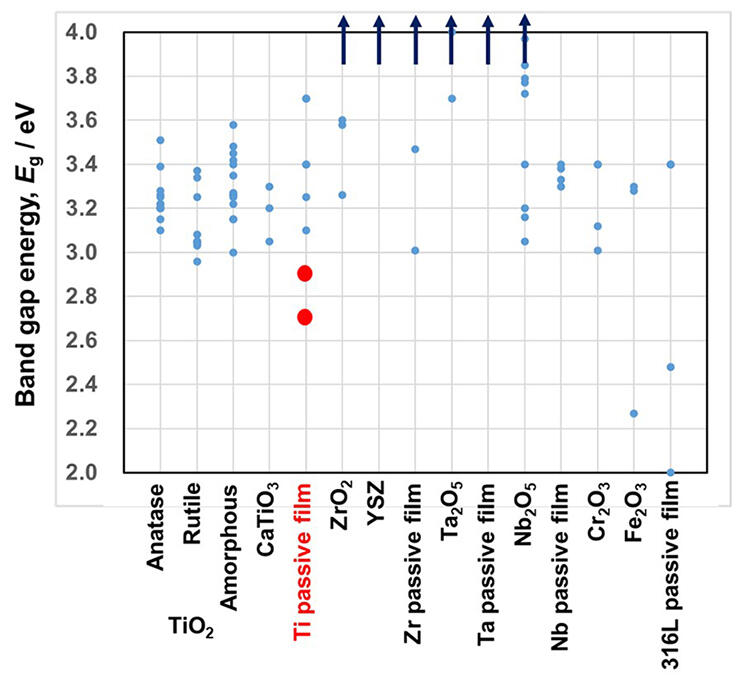A research group led by Professor Takao Hanawa of the Department of Metallic Biomaterials, Institute of Biomaterials and Bioengineering, Tokyo Medical and Dental University, conducted joint research with a research group led by Professor Shinji Fujimoto of the Division of Materials and Manufacturing Science, Graduate School of Engineering, Osaka University, and, based on the electron band structure of titanium's passive film (the thin oxide film covering the surface of titanium), found that the reason why titanium shows outstanding biocompatibility is because it exhibits high corrosion resistance and moderate reactivity at the same time. The research was supported by the DEJIMA Project (Design & Engineering by Joint Inverse Innovation for Materials Arch) from the Ministry of Education, Culture, Sports, Science and Technology, and the research results were published via open access in Science and Technology of Advanced Materials, an international scientific journal.
Numerous studies and clinical trials have shown that the biocompatibility of titanium and titanium alloys is particularly outstanding amongst metallic materials, and both are widely used as materials for medical devices. However, their outstanding biocompatibility is not solely due to their high corrosion resistance. Another contributing factor was believed to play a role, but this remained unclear until now.
Although it is clear that the formation of biological tissues on the surface of materials is governed by the interfacial reactions between the material and the human tissues, until now, research on promoting tissue formation on solid materials had been concentrated solely on the goal of making practical applications, without clarifying its underlying mechanism and principles.
In this joint research, X-ray photoelectron spectroscopy (XPS) and photoelectrochemical response analysis were used to clarify the band structure of the passive film on titanium in Hank's solution and in a physiological saline solution. The material used was industrially pure titanium CP Ti (ISO Class 2), which is used for implantation within the body.
The research results showed that the bandgap of the outermost layer of the titanium's passive film is smaller than the bandgap of the n-type semiconductors anatase and rutile, and smaller than the bandgap of the passive films on highly corrosion-resistant materials such as zirconium, tantalum, and niobium. The research group believes that this relatively small bandgap energy induces titanium's reactivity, which is compatible with high corrosion resistance, thereby producing its good biocompatibility.

Provided by Prof. Takao, Department of Metallic Biomaterials, Tokyo Medical and Dental University
The outstanding biocompatibility of titanium materials, which are the most widely used materials in the medical field, has been the subject of extensive research investigating biological reactions, but, although it is obvious that the factors governing biocompatibility are on the material's surface, there had been no studies on this factor to date. This research focused on this point and, from the viewpoint of the density of electron states at a material's surface, proposed a new approach for considering the principle of biocompatibility. The reason for titanium's outstanding biocompatibility had long been a mystery, but, from looking at the electron band structure and the bandgap energy at the material's surface, this research clarified that titanium's outstanding biocompatibility and high corrosion resistance is because the passive film's bandgap energy is small, which is also the reason for its moderate reactivity. Little research has been done on the electron band structure of passive films in simulated biological environments, so this is not an issue that is limited to titanium. This research has proposed a new perspective in this respect as well.
Because the origin of biological reactions on solid surfaces is the exchange of electrons between biological tissues and the material's surface, this research approach paves the way to explaining materials' biological reactions on the basis of electron transfer, and for a unified understanding of biocompatibility from surface electron structure.
This article has been translated by JST with permission from The Science News Ltd.(https://sci-news.co.jp/). Unauthorized reproduction of the article and photographs is prohibited.




